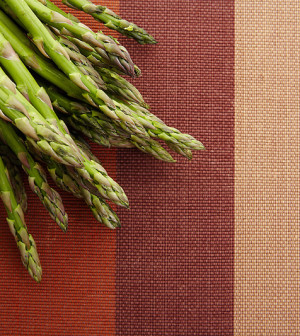- Understanding the Connection Between Anxiety and Depression
- How Daily Prunes Can Influence Cholesterol and Inflammation
- When to Take B12 for Better Absorption and Energy
- Epsom Salts: Health Benefits and Uses
- See What Saffron Can Do for Sleep and Heart Health
- 6 Common Mistakes to Avoid Before Your Physical
- Can Sweating Really Help You Beat a Cold?
- Strengthening Your Relationship: Practical Strategies
- Skip Storing This Everyday Product in the Fridge Door
- Green Tea + B3 Pairing May Boost Brain Health
Are High School Athletes at Risk From Artificial Turf?

Lower levels of fake soil in artificial turf — a cost-saving move — may be linked to sharply higher numbers of injuries among high school football players, new research suggests.
The findings of the industry-funded research suggest a connection but don’t definitively prove that less fake soil causes more injuries.
Still, “we’re seeing a phenomenal effect. You’re exchanging low cost for higher injuries,” said study author Michael Meyers, an associate professor with the department of sport science and physical activity at Idaho State University. “It’s an eye opener, definitely a game changer.”
Meyers recommends that schools move to prevent injuries by installing artificial turf with more fake soil, known as “infill.”
According to Meyers, modern school fields often feature artificial turf instead of grass for several reasons. For one, artificial turf doesn’t require the same level of maintenance and watering as grass. And as schools use their fields for purposes beyond athletics, artificial turf can tolerate the wear and tear better than grass, he said.
Artificial turf can be expensive, potentially costing $1 million for a field, Meyers said, but its durability can make it cost-effective.
The question: Does the thickness of the turf’s infill affect injuries? Meyers decided to explore the issue and sought funding assistance from turf makers. Only one company, FieldTurf, agreed to help support his research, he said.
Meyers focused on a measurement of infill, a combination of rubber and sand that underlies artificial turf. Infill is measured by the number of pounds of infill per square foot; more infill translates to more pounds per square foot — and a higher cost.
For the study, Meyers analyzed injuries at 52 high schools in four states over five football seasons. All the high schools had artificial turf.
The average number of injuries per season on the fields with the most infill (9 or more pounds per square foot) was 18. But that number grew to 34 on fields with infill measured at 3 to 5 pounds per square foot, the findings showed.
The study also reported higher rates of injuries from contact with the ground on fields with less infill. In general, Meyers said, these injuries occurred to players’ arms and legs.
Why might more infill translate to fewer injuries?
“It’s kind of common sense,” Meyers said. “Would you rather hit your head on a pillow or hit your head on concrete? You want a little bit of padding, some thickness.”
When there’s less infill, he said, “you have less firmness, less foundation, less room for error.”
Meyers recommends that campuses install artificial turf with at least 6 pounds per square foot of infill. If an existing field has less than that, he said, school officials should add more infill.
Sports medicine specialist Dr. Samuel Taylor is an orthopedic surgeon at the Hospital for Special Surgery in New York City. He said the new study is important, but he cautioned that decisions about infill aren’t simple.
“Many other factors likely come into play, such as the influence of weather conditions in a given location on infill performance,” said Taylor, who’s also an associate team physician with the National Football League’s New York Giants.
Also, Taylor said, “we don’t know the impact of how often a field is used on infill performance. For example, an NFL stadium used 10 times over a season and a high school field used year-round may perform differently over time.”
The study was to be presented Friday at the American Orthopaedic Society for Sports Medicine annual meeting in Colorado Springs, Colo. The findings of studies released at medical conferences are considered preliminary until they are published in a peer-reviewed journal.
More information
For more about athletic safety for kids, visit the U.S. Centers for Disease Control and Prevention.
Source: HealthDay
Copyright © 2026 HealthDay. All rights reserved.










